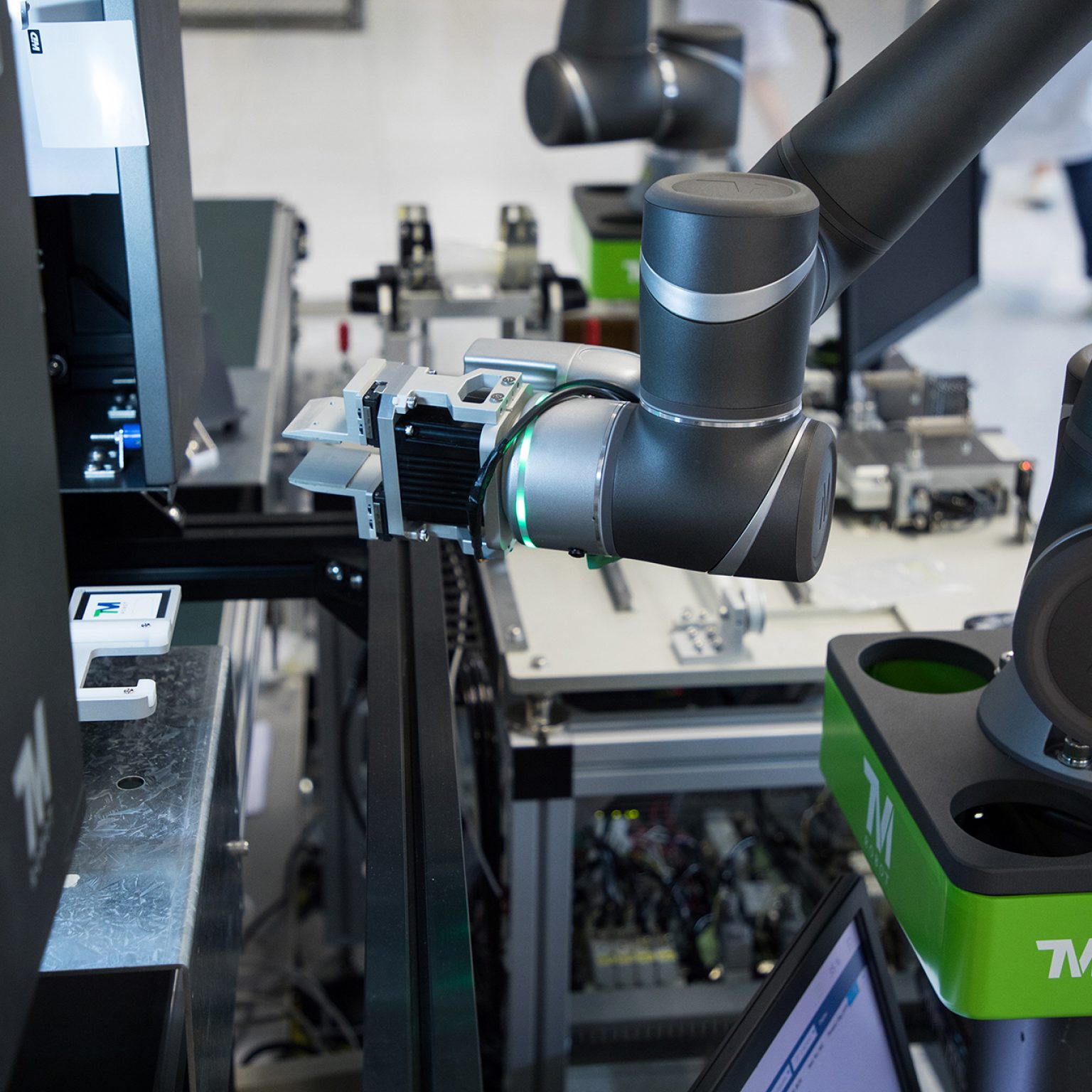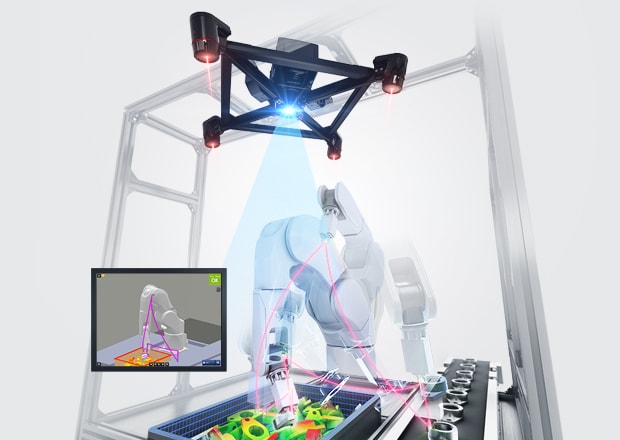How optical measurement system is reshaping automation workflows
Wiki Article
Why Robotic Vision Is Vital for Advancing Precision in Manufacturing Industries
Robotic vision has actually arised as an important component in contemporary production. It empowers machines to assess visual information with amazing accuracy. This ability boosts quality assurance and decreases the likelihood of flaws. As sectors undertaking for better performance, recognizing the intricacies of robotic vision becomes necessary. The interaction between innovation and operational processes elevates important concerns regarding future innovations and their effects. What exists in advance for precision in manufacturing?Comprehending Robotic Vision Innovation

Enhancing Quality Assurance With Robotic Vision

Increasing Functional Performance Via Automation

Automating production procedures via robotic vision significantly enhances production rate, enabling for quicker turnaround times. This innovation additionally minimizes error rates, guaranteeing higher accuracy in procedures. In addition, streamlined source management is achieved, bring about extra effective use products and labor.
Boosted Production Speed
While the integration of robotic vision in production has transformed functional processes, its most considerable benefit exists in boosted production speed. By utilizing advanced photo processing and real-time information analysis, robotic vision systems can swiftly identify and respond to production needs. This accelerated responsiveness gets rid of hold-ups generally associated with hand-operated assessment and decision-making processes. In addition, these systems can operate continually without tiredness, making certain that assembly line maintain high throughput. The capability to find and deal with concerns instantly further simplifies process, allowing manufacturers to enhance result levels (fibre testing equipment). Subsequently, companies benefit from lowered cycle times and boosted performance, positioning them competitively in the market. Improved manufacturing speed, driven by robotic vision innovation, inevitably results in improved operational performance throughout the manufacturing landscapeReduced Mistake Fees
As production speed increases, maintaining accuracy ends up being extremely important in making processes. Robotic vision systems significantly add to lowered mistake rates by supplying precise dimensions and real-time assessments. These sophisticated systems utilize high-resolution video cameras and innovative algorithms to discover defects, misalignments, or variances in products during setting up. By automating top quality control, suppliers can swiftly identify and rectify concerns that human inspectors might ignore. This not just minimizes waste but likewise boosts general product top quality. In addition, the integration of robotic vision reduces variability in manufacturing, making sure that each thing fulfills rigid requirements. Subsequently, manufacturers experience less pricey recalls and enhanced consumer fulfillment, ultimately bring about a much more effective and rewarding operational design.Structured Source Monitoring
Efficient source management is crucial for making best use of operational efficiency in manufacturing, particularly when incorporated with robotic vision systems. These systems enhance the capacity to keep track of and assign resources accurately, guaranteeing that products and labor are made use of efficiently. By utilizing advanced aesthetic modern technologies, producers can recognize inefficiencies in actual time, minimizing waste and improving production timelines. Furthermore, robotic vision allows precise supply tracking, minimizing the risk of overstocking or stockouts. Automation of these procedures not only streamlines procedures however likewise permits human workers to focus on higher-value jobs, fostering development and performance. Because of this, companies can achieve substantial price savings while preserving high-quality standards, ultimately positioning themselves much more competitively in the market.
Decreasing Human Error in Production Processes
Human mistake continues to be a significant challenge in manufacturing processes, usually bring about costly mistakes and inadequacies. In environments where precision is extremely important, even minor gaps in judgment can cause faulty products or delays in production schedules. Robotic vision systems can alleviate these risks by supplying precise and constant tracking of making operations. By automating tasks such as quality assurance and setting up line examinations, these systems decrease the dependence on human oversight, thus lessening the capacity for errors.Moreover, robotic vision technology enhances information accuracy, permitting for real-time changes based on aesthetic comments. This capability ensures that any inconsistencies from established standards are quickly recognized and remedied, better lowering the possibility of errors. As manufacturers progressively embrace robotic vision, they can anticipate not just to enhance precision and efficiency but additionally to promote a safer working environment by reducing the stress on human drivers.The Function of Artificial Intelligence in Robotic Vision
Expert system substantially boosts robotic vision by using artificial intelligence formulas and progressed photo processing robotic vision strategies. These modern technologies allow robotics to analyze visual data with better accuracy, boosting both efficiency and accuracy in making setups. Because of this, the integration of AI right into robotic vision systems stands for a critical development in automation.Equipment Understanding Algorithms
Maker knowing formulas are transforming robotic vision in production by enabling devices to analyze and examine visual information with impressive precision. These formulas allow robots to discover from vast datasets, adapting to new scenarios and improving their performance with time. By leveraging methods such as supervised and not being watched knowing, robotic systems can recognize patterns and anomalies in real-time, which enhances quality assurance and reduces waste. In addition, maker understanding facilitates better decision-making processes, enabling robots to optimize their activities based on learned experiences. As these formulas advance, they equip robotic vision systems to perform progressively complicated jobs, inevitably driving efficiency and precision in manufacturing procedures. The assimilation of machine knowing subsequently plays a pivotal duty in the development of robotic vision technology.Image Handling Methods
Enhancing the capabilities of robotic vision, picture handling methods play a necessary duty in making it possible for systems to interpret visual info properly. These techniques include formulas that enhance photo high quality, essence relevant functions, and recognize patterns within aesthetic data. By using approaches such as edge discovery, segmentation, and item recognition, robotic systems can recognize and categorize components with impressive precision. The assimilation of expert system even more magnifies these techniques, enabling for adaptive understanding and boosted decision-making in vibrant environments. Therefore, robotic vision systems can not just spot issues but also enhance processes, leading to increased effectiveness and accuracy in production. The continuous advancement of image processing strategies stays crucial to the advancement of robotic vision in industrial applications.Future Patterns in Robotic Vision for Manufacturing Industries
As industries significantly focus on effectiveness and accuracy, the evolution of robotic vision modern technology is established to transform manufacturing processes significantly. Future trends indicate considerable developments in fabricated knowledge and artificial intelligence assimilation within robotic vision systems. These renovations will certainly enhance real-time decision-making capacities, permitting robots to adjust to varying problems autonomously. The fostering of 3D vision systems is prepared for to increase, supplying more precise spatial understanding and object acknowledgment. Collaborations between robotics and human employees may likewise develop, with innovative vision systems promoting much safer and extra efficient interactions. In addition, making use of edge computer will likely allow faster information handling, decreasing latency and boosting operational responsiveness. As these patterns unfold, the manufacturing sector stands to take advantage of enhanced quality assurance, minimized waste, and streamlined operations, inevitably resulting in boosted competition in a swiftly transforming market.Frequently Asked Questions
How Does Robotic Vision Differ From Conventional Maker Vision Equipments?
Robotic vision integrates sophisticated formulas and real-time processing, making it possible for dynamic analysis and communication with atmospheres. On the other hand, standard maker vision largely focuses on static image capture and evaluation, restricting adaptability and responsiveness in intricate production situations.What Industries Benefit The Majority Of From Robotic Vision Technology?
Numerous markets benefit substantially from robotic vision innovation, consisting of automobile, electronic devices, and food processing. These markets utilize enhanced precision, performance, and flexibility, ultimately boosting production high quality and minimizing operational prices with innovative automation options.Can Robotic Vision Solutions Be Integrated With Existing Production Equipment?
Robotic vision systems can indeed be incorporated with existing production equipment. This assimilation boosts functional effectiveness, enabling smooth cooperation in between conventional equipment and advanced visual innovation, eventually improving overall manufacturing procedures and results.What Are the Expenses Related To Implementing Robotic Vision Solutions?
The costs linked with applying robotic vision options vary substantially, affected by factors such as system intricacy, needed software program, equipment parts, integration with current equipment, and recurring upkeep expenditures, ultimately impacting total return on investment.Just how Do Maintenance and Support for Robotic Vision Equipments Job?
Upkeep and assistance for robotic vision systems involve normal software updates, hardware examinations, and troubleshooting. optical measurement system. Vendors commonly use solution contracts, making sure prompt assistance and lessening downtime to preserve peak efficiency and integrity in commercial applicationsReport this wiki page